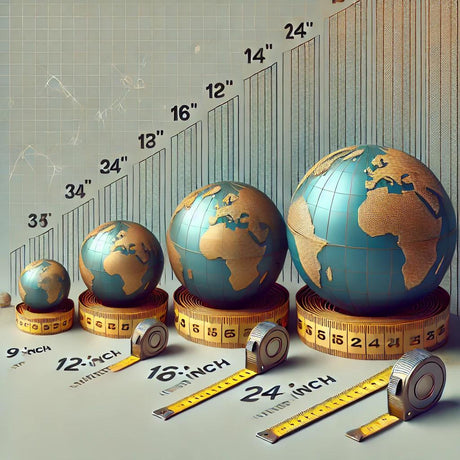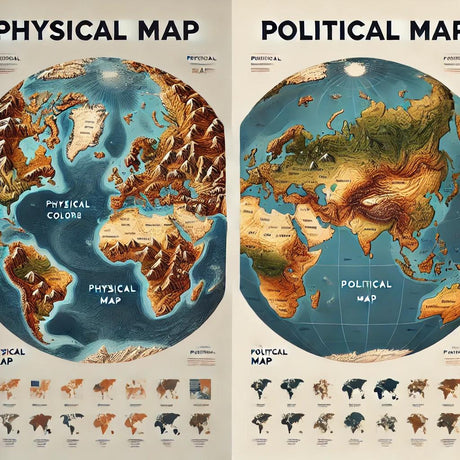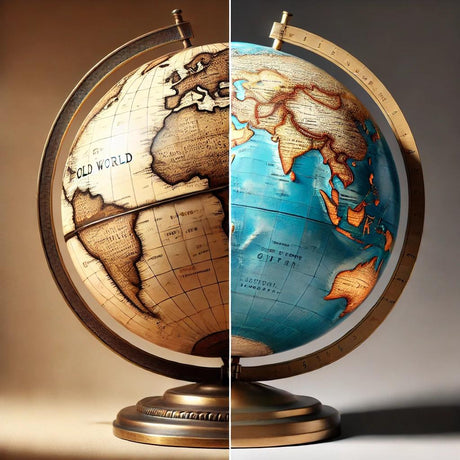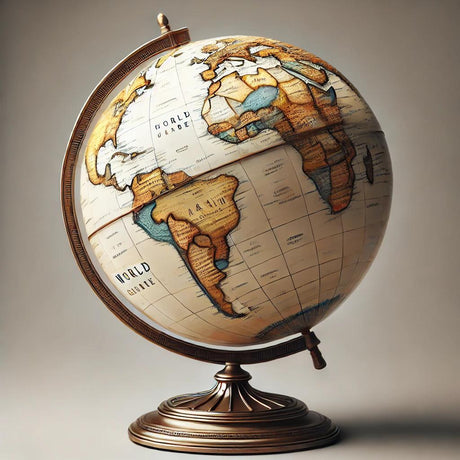
Los globos terráqueos han sido apreciados durante mucho tiempo por su capacidad de proporcionar una representación tridimensional de nuestro planeta. Si bien a menudo se los aprecia por su atractivo decorativo, los globos terráqueos también son herramientas poderosas para la educación, en particular en el campo de la ciencia ambiental. A continuación, se muestra cómo se pueden usar los globos terráqueos para explorar y resolver diversas preguntas en la ciencia ambiental.
Comprender los ecosistemas y los biomas
Uno de los aspectos fundamentales de la ciencia ambiental es el estudio de los ecosistemas y biomas. Un globo terráqueo permite a los estudiantes e investigadores visualizar la distribución de diferentes biomas, como bosques, desiertos, praderas y tundras. Al examinar el globo terráqueo, se puede entender cómo las características geográficas y las zonas climáticas influyen en el tipo de ecosistemas que se encuentran en diferentes partes del mundo.
Análisis de los patrones climáticos
Los globos terráqueos son muy útiles para estudiar los patrones y cambios climáticos, ya que brindan una visión clara de las zonas climáticas de la Tierra, desde los trópicos hasta las regiones polares. Al examinar estas zonas, los estudiantes pueden comprender mejor la distribución de los patrones climáticos, las corrientes oceánicas y los sistemas de viento. Este conocimiento es crucial para predecir los cambios climáticos y su posible impacto en diferentes regiones.
Investigando los cambios ambientales
La ciencia ambiental a menudo implica el estudio de los cambios en el medio ambiente, como la deforestación, la desertificación y el derretimiento de los casquetes polares. Un globo terráqueo ayuda a rastrear estos cambios a lo largo del tiempo al proporcionar un contexto espacial. Los investigadores pueden marcar áreas de preocupación y comparar datos históricos con observaciones actuales para evaluar el alcance de los cambios ambientales.
Mapeo de los recursos naturales
Comprender la distribución de los recursos naturales, como los minerales, los bosques y los cuerpos de agua, es un componente clave de la ciencia ambiental. Los globos terráqueos se pueden utilizar para mapear estos recursos y analizar su disponibilidad en diferentes regiones. Esta información es vital para la gestión y planificación sostenibles de los recursos.
Examinando el impacto humano
Las actividades humanas tienen un impacto significativo en el medio ambiente, desde la urbanización hasta la contaminación. Los globos terráqueos ayudan a visualizar el alcance del impacto humano en diferentes partes del mundo. Por ejemplo, los estudiantes pueden utilizar globos terráqueos para identificar regiones con altos niveles de contaminación o áreas afectadas por grandes cambios en el uso de la tierra. Esta ayuda visual apoya los debates sobre políticas ambientales y esfuerzos de conservación.
Beneficios educativos
El uso de globos terráqueos en la enseñanza de las ciencias ambientales ofrece numerosos beneficios. Proporcionan una forma tangible para que los estudiantes interactúen con datos geográficos y ambientales complejos. La naturaleza tridimensional de los globos terráqueos ayuda a comprender la estructura de la Tierra y las relaciones espaciales , que a menudo son difíciles de comprender solo con mapas planos. Además, los globos terráqueos se pueden utilizar en lecciones interactivas, lo que hace que el aprendizaje sea más atractivo y efectivo.
Conclusión
Los globos terráqueos son más que simples objetos decorativos: son herramientas esenciales para estudiar y comprender nuestro planeta. En el campo de las ciencias ambientales, los globos terráqueos brindan información valiosa sobre los ecosistemas, los patrones climáticos, los cambios ambientales, los recursos naturales y el impacto humano. Al incorporar globos terráqueos en entornos educativos y de investigación, podemos mejorar nuestra comprensión de la Tierra y promover prácticas ambientales sostenibles.
Para obtener más información sobre globos terráqueos de alta calidad para fines educativos, visita Ultimate Globes .




